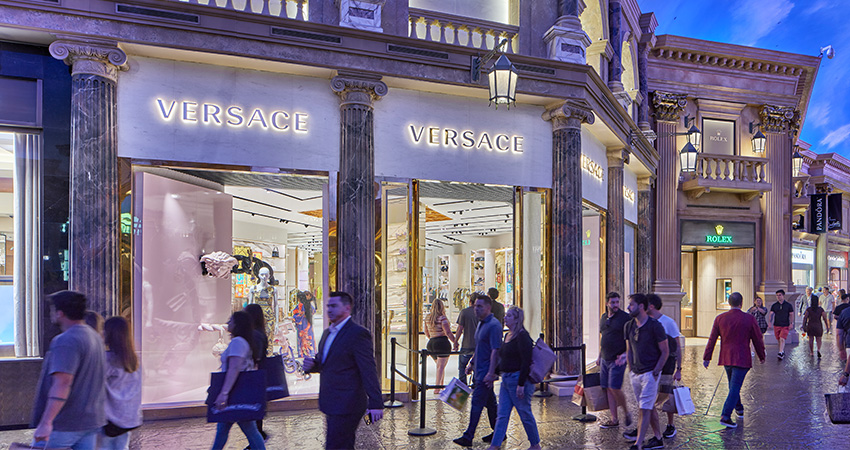Versace and Rolex at the Simon Property Group Forum Shops in Las Vegas (company photo)
Mall REIT Simon Property Group has expanded its partnership with retail technology provider Dropit to offer its tenants the ability to optimize functions like ship from store, inventory management and returns, powered by AI technology, initially at 60 Simon locations with plans to expand to all 194 malls nationally.
Simon Property Group has a separate innovation division that explores technologies such as livestream shopping, augmented reality and omnichannel store layout. Other partners include Fillogic, Happy Returns and Leap.
Dropit’s technology sits on top of a company’s order management, warehouse management and inventory management systems, acting as a decision engine for order sourcing, fulfillment, delivery and returns. It also powers a capability akin to Amazon’s “just walk out” technology, letting shoppers scan store items and check out from their phone, skipping the cashier.
Jonathan Dampier, CMO of Dropit, said the partnership began in 2019 when Simon Property Group began using a solution that allows orders across a mall to be consolidated and delivered to a nearby pickup point, hotel or residence.
“During the pandemic, when there weren’t shoppers in malls and stores, we spent a lot of time working on our AI platform, shoring it up,” Dampier said. “Now that it’s been out for a couple of years, and Simon has seen what we’re doing with other retailers, they wanted to renew the partnership.”
Dampier said for the past month or so, Dropit has been training Simon Property Group employees on how the platform works, while Simon has been introducing mall tenants to its technology partner to explain the benefits.
While most OMS systems use proximity as the most important criteria when sourcing an online order to fulfill from store inventory, Dampier said Dropit’s AI and machine learning adds in other factors, such as consideration of a local store’s busy period.
“With AI, the system knows that when an order comes in at 3 p.m., and the closest store’s peak is from 2 p.m. to 5 p.m., the order likely won’t go out until the next day,” he said. “It routes the order to the third-closest store. Or maybe there’s bad weather in Dallas, so the order goes to a store in Houston.”
In similar fashion, returned goods can be routed to the location where they’re most likely to resell at full price, based on a variety of factors considered by the AI decision engine. Items are returned to stock quicker, Dampier said, instead of sitting in the returns corner of a warehouse awaiting disposition.
“It improves the velocity of stock so it doesn’t become dead or marked down,” he said. “Simon was hearing from retailers they have a hard time balancing inventory between stores. They saw this could be a game changer for a lot of them, especially midsize companies in their malls.”

